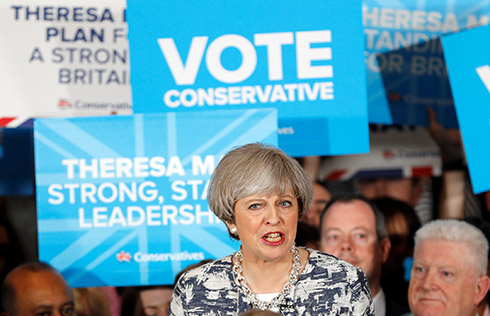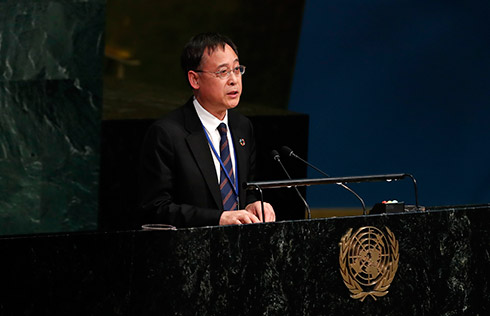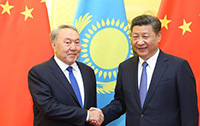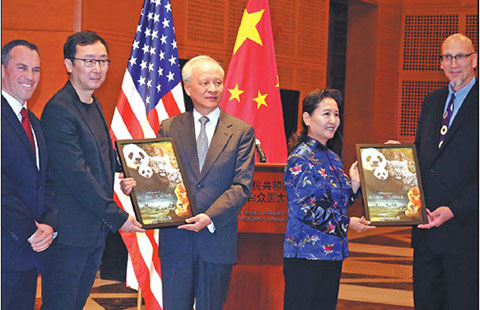Rise of China, other emerging markets well on the way
The United States may like to keep its dominant position, but the rise of other parts of the world looks like an irreversible trend, as predicted in the latest report by consulting firm PricewaterhouseCoopers (PwC).
The report released last week shows that by 2050, six of the world's 10 largest economies will be emerging markets measured by purchasing power parity (PPP). While China will remain the largest economy, India will become the world's second largest, pushing the US into third place.
Following the US will be, in order: Indonesia, Brazil, Russia, Mexico, Japan, Germany and the United Kingdom, according to the report, titled The Long View: How Will the Global Economic Order Change by 2050?
The report projects that the world economy could more than double in size by 2050, assuming broad growth-friendly policies, such as no sustained long-term retreat into protectionism, and no major global civilization-threatening catastrophes.
It predicts that China's economy will account for around 20 percent of the world GDP by 2050.
China's GDP measured by PPP stood at $21.3 trillion in 2016, compared to the $18.6 trillion of the US. But by 2050, China will shoot up to $58.5 trillion, while India will hit $44.1 trillion, and the US will be at $34.1 trillion.
The report sees Vietnam, the Philippines and Nigeria moving up the ranks quickly, respectively to 20th, 19th and 14th largest of all world economies, from their places of 32nd, 28th and 22nd in 2016.
It says that the size of the E7 (China, India, Indonesia, Brazil, Russia, Mexico and Turkey) could be double the size of the G7 (US, UK, France, Germany, Japan, Canada and Italy) by 2040.
While today's advanced economies will continue to have higher average incomes, emerging economies will make good progress toward closing the gap by 2050.
The report also shows the challenges ahead for policymakers in achieving sustainable long-term growth. It advises emerging market governments to implement structural reforms to improve their macroeconomic stability, infrastructure and institutions.
On the China front, Allan Zhang, chief economist of PwC for the Chinese mainland and Hong Kong, pointed out that the Chinese government will need to make sure that future funds will flow into productive projects instead of into "zombie enterprises", referring to many inefficient state-owned enterprises.
He also pointed to the severe challenge of China's demographic changes to its long-term growth. "The ageing society and shrinking working population will push up labor costs significantly and could undermine China's competitiveness and economic vitality, unless offset by strong technology-driven productivity gains," he wrote in the report's section on China.
Other challenges China faces include rising bad debt and how China would push forward its supply-side structural reform, streamline regulations, lower business costs and create pro-innovation environment.
Zhang believes China still has great potential for growth, given that its urbanization process is still at a relatively early stage and its services sector has a lot of scope to catch up with advanced economies like the US.
Such an analysis of China is largely in line with recommendations by the IMF and other economists.
The PwC report asserts that the ascent of emerging markets will provide great opportunities for business. It cites the successful example of how General Motors has adopted a local focus in China.
The IMF was the first in October 2014 to announce that China's GDP that year would surpass that of the US by PPP.
The growth trajectory forecasted by PwC for China and the US has also been reflected in the public views in the two countries in Pew Center surveys of the past years. Americans have increasingly regarded China as an economic power.
According to a Pew survey released last October, more Chinese see their country as ascending while the US public does not.
In 2016, 46 percent of Americans said the US plays a less important role as a world leader compared with 10 years ago. That number was only 20 percent in 2004.
Meanwhile, 75 percent of the Chinese believe their country is playing a more important role in the world today compared with a decade ago.
Contact the writer at chenweihua@chinadailyusa.com.
(China Daily USA 02/13/2017 page2)




















